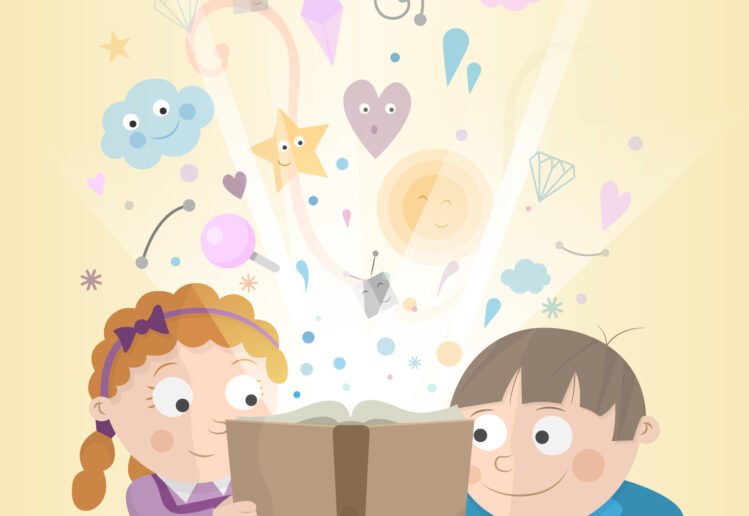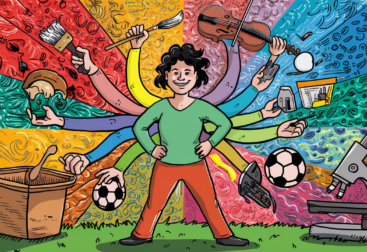There’s something magical about a toddler curling up with a book, eyes wide with wonder, as they listen to a story unfold. But did you know that storytelling is more than just a bedtime routine? It plays a crucial role in early childhood development, helping toddlers build language skills, spark their imagination, and develop a lifelong love for learning.
Whether you’re a daycare provider, educator, or parent, here’s why reading and storytelling should be a daily part of a toddler’s world.
1. Boosts Language and Communication Skills
The more words toddlers hear, the more they learn! Storytelling helps little ones:
🗣 Expand their vocabulary – Hearing new words in context helps toddlers understand and use them.
👂 Improve listening skills – Following along with a story strengthens focus and comprehension.
💬 Encourage early speech – Repeating rhymes, animal sounds, and simple phrases builds confidence in speaking.
💡 Example: A toddler who hears the word “giraffe” in a story may later point to one at the zoo, showing their growing word recognition!
2. Sparks Imagination and Creativity
Stories transport toddlers into new worlds where animals talk, spaceships fly, and anything is possible! Storytelling encourages:
🎭 Pretend play – After hearing Goldilocks and the Three Bears, toddlers may act out the story in their play.
🎨 Creative thinking – Open-ended questions like “What do you think will happen next?” help toddlers develop problem-solving skills.
🌈 A love for storytelling – Many children begin making up their own stories, which is an early sign of literacy development!
💡 Example: One daycare encouraged creative storytelling by giving toddlers puppets and letting them “make up” the ending to a familiar story.
3. Strengthens Emotional and Social Development
Books help toddlers understand big emotions and social interactions. Through stories, they learn:
💞 Empathy – Seeing characters express sadness, happiness, or frustration helps toddlers recognize emotions in themselves and others.
🤝 How to navigate friendships – Books about sharing, kindness, and teamwork help toddlers develop social skills.
😌 How to cope with feelings – Stories about bedtime fears, starting daycare, or feeling mad help toddlers safely process emotions.
💡 Example: Reading The Feelings Book by Todd Parr in a classroom led to a great discussion where toddlers pointed out times they felt “happy” or “frustrated.”
4. Helps with Cognitive Development and Early Literacy
Even before they can read, toddlers are developing important pre-literacy skills through storytelling:
📚 Understanding story structure – Learning that stories have a beginning, middle, and end prepares them for reading comprehension.
🔤 Letter and sound recognition – Seeing words in print helps toddlers make connections between spoken and written language.
🧠 Memory and recall skills – Repeating favorite books helps toddlers remember words and sequences.
💡 Example: One daycare teacher pointed to words while reading, and over time, toddlers started recognizing letters like “B” in Brown Bear, Brown Bear, What Do You See?
5. Creates Special Bonding Moments
Storytime isn’t just educational, it’s also a wonderful way to connect with toddlers. Whether it’s one-on-one reading at bedtime or group storytelling in a daycare, these moments:
🤗 Strengthen relationships – Snuggling up with a book fosters closeness and comfort.
🎵 Make learning fun – Silly voices, interactive elements, and singing along to rhymes keep toddlers engaged.
🌙 Help with transitions – Stories can be a calming part of routines, like nap time or winding down after play.
💡 Example: A toddler who struggles with bedtime may feel comforted by reading the same book every night as part of their sleep routine.
How to Make Storytelling Engaging for Toddlers
Want to make storytelling a favorite part of the day? Try these fun techniques:
✔ Use animated voices – Make the wolf in The Three Little Pigs sound BIG and BAD!
✔ Let toddlers participate – Ask them to turn the pages, point to pictures, or say familiar words.
✔ Choose interactive books – Lift-the-flap books, touch-and-feel pages, and rhyming books keep toddlers engaged.
✔ Act it out! – Use puppets, stuffed animals, or hand gestures to bring stories to life.
💡 Example: One daycare teacher used finger puppets while reading Five Little Monkeys Jumping on the Bed, and the toddlers loved acting it out with her!
Final Thoughts
Reading to toddlers isn’t just about teaching them words, it’s about opening up a world of imagination, emotions, and learning. The more we read with toddlers, the more confident, curious, and expressive they become.
💡 Key Takeaway: Whether it’s a bedtime story, a classroom read-aloud, or a silly made-up tale, every story helps shape a child’s development. So grab a book, cuddle up, and start reading!
📖 What’s your toddler’s favorite book? Share in the comments!










